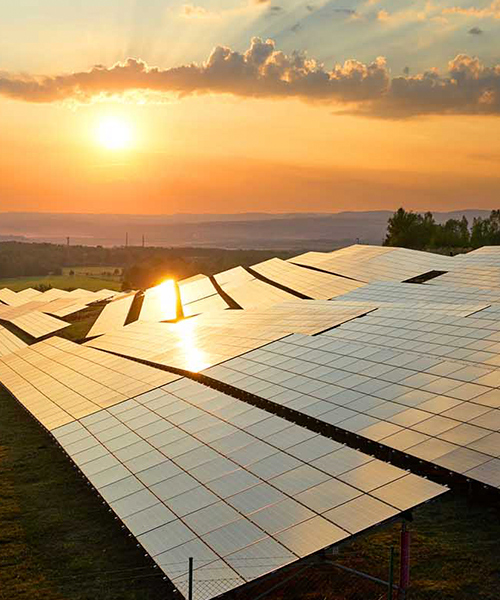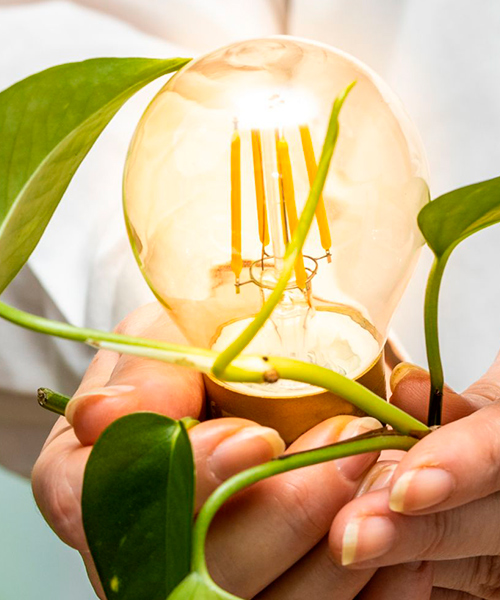Combined cycle
Combined cycle
Combining gas and steam
Combining gas and steam
A combined cycle power plant plays an important role in the energy transition by offering an alternative for electricity generation. This technology combines gas and steam turbines to maximize efficiency and reduce CO2 emissions.
What is a combined cycle power plant?
What is a combined cycle power plant?
A combined cycle power plant, also known as a combined cycle thermal power plant, is an electricity generation facility that combines two types of turbines: a gas one and a steam one. This combination allows you to make the most of the heat generated during the process, achieving a significantly greater efficiency compared to simple cycle plants, which only use a gas turbine.

How does combined cycle work?
How does combined cycle work?
Combined cycle uses two interconnected thermodynamic cycles to maximize efficiency in the generation of electricity: the gas cycle and steam cycle.
1. Gas cycle
- Air intake and compression: air is taken from the environment and compressed at high pressure in a compressor.
- Combustion: the compressed air is mixed with natural gas in a combustion chamber, where it is burned to produce hot gases at high pressure.
- Expansion and generation of electricity: the hot gases resulting from combustion expand and drive the turbines, causing them to rotate. The movement of the turbines is coupled to an electric generator, thus producing electricity.
2. Steam cycle
- Recovery of heat: the hot gases from the gas turbine, which are still at a high temperature, pass through a heat recovery unit, where the waste heat is used to heat water.
- Production of steam: the water heated in the heat recovery unit is converted to high-pressure steam in a boiler.
- Expansion and generation of electricity: the high pressure steam expands in the steam turbines, causing them to rotate. This movement is connected to an electric generator, producing more electricity.
- Condensation and recirculation: the water vapor that has passed through the turbine is condensed in a condenser, turning it back into liquid water. This water is recirculated to the boiler to start the cycle again.
Advantages of combined cycle power plants
Advantages of combined cycle power plants
The combined cycle power plant offers several significant benefits compared to the conventional energy generation plant, which use coal or hydrocarbons as a fuel. Its main advantages are:
- Reduction of CO2 emissions: thanks to their high efficiency, combined cycle power plants emit less carbon dioxide per unit of electricity generated compared to coal-fired plants.
- Flexibility: the combined cycle plant can be adjusted to fluctuations in energy demand, making them perfect to complement renewable primary energy sources, such as solar and wind.
- Low water consumption: compared to coal-fired or nuclear plants, combined cycle power plants require less water. This is due to its more efficient cooling processes and lower waste heat generation.
- Lower production of waste: these power plants generate less solid and liquid waste due to the efficiency in the conversion of energy and combustion technology used.
Repsol and combined cycle
Repsol and combined cycle
In the last few years, we have strengthened our presence in this strategic sector through the acquisition and operation of important combined cycle facilities. This technology allows us to optimize the efficiency in the generation of electricity and expand our energy matrix.
Our combined cycle power plants in Spain
At Repsol, we operate two important combined cycle power plants:
- Escatrón combined cycle plant (Zaragoza): it has a generation capacity of 818 megawatts (MW), which is equivalent to supplying electricity to approximately 500,000 homes.
- Algeciras combined cycle plant (Cadiz): it has a capacity of 830 megawatts (MW), enough to provide electricity to about 510,000 homes.


